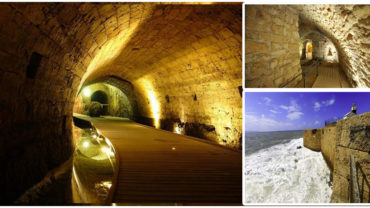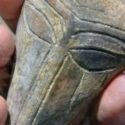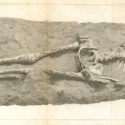Lost City Of The Giants In The Jungles Of Ecuador
Ecuadorian stories relate to ancient cities of giants abandoned by their occupants a long time ago and are gradually being reclaimed by nature. However, findings like this one indicate that giants were unquestionably real.
Indeed, tribes from throughout the Amazonian basin recall the existence of an ancient race of giants who established prosperous civilizations long before ‘normal-sized’ humans arrived.
In 2012, one such legend led a group of researchers to a secluded spot in Ecuador’s rain forests. Since time immemorial, several tribes had used the location as a customary gathering site, believing it to be inhabited by solid spirits.

For the villagers, the site was hallowed, and they spoke of it with a mixture of horror and respect. When the crew discovered the presence of ancient megalithic structures on the site, the explanation for their attitude became clear.
The tallest building was a 260-foot-tall by a 260-foot-wide pyramid with an inclination far too steep to be natural. It had been constructed with hundreds of big, irregularly shaped rocks, each weighing around 2 tonnes. They discovered a flat region near the summit that might have been utilized as a ceremonial or sacrifice platform.
“It appears to be a paved wall, an old roadway or plaza with a 60-degree angle, or even the top of a bigger structure,” said French-American archaeologist Benoit Duverneuil. “Many of the stones were precisely aligned, had sharp edges, and appeared to have been fashioned by human hands,” says the researcher.
The protective covering of dirt had kept the flat surface of the stones. It also revealed the existence of a cement-like material employed to hold the stones together. Based on the apparent antiquity of the remains, this might be the first instance of concrete use in America. The builders of this ancient fortification were well ahead of their time in terms of engineering skills.

The most intriguing discovery, though, came in the shape of tools. They were large and old, and they scattered the woodland floor. Their exact function is uncertain, but the team believes they were utilized in metalworking. However, one thing is certain: their size would have made it extremely difficult for a normal-sized human to handle them.
Bruce Fenton, a writer, and researcher, was part of the crew that unearthed this buried city of giants, and he feels the tools speak for themselves:
The existence of extraordinarily giant hammers, or at least stone hammerheads, strongly suggests that this settlement formerly housed the same race of giants. Assuming these were linked to thick wood handles, they would be enormous in size and weight, making their usage as tools unfeasible for a normal Inca or indigenous Indian, who are often small-built people standing no more than five feet.”
It is worth noting that prior expeditions in Ecuador’s rain forests yielded evidence that corroborates the presence of giants in the past. In caverns all across the Americas, bones far more significant than those of a typical person were uncovered. The evidence keeps piling up, implying that our history may require some footnotes. They’re huge.
It should not be a surprise that the government chooses to overlook this surprising finding. The Ecuadorian Ministry of Culture sent a team to investigate the discovery in 2013, but it was determined to be nothing more than a natural feature.

Fenton and his colleagues disagree. The size and form of the blocks and the accuracy and technology used in cutting, polishing, and assembling them appear to hint at an artificial origin. Furthermore, it seems that more structures are still to be uncovered.
Several more huge mounds remain unexcavated. Despite being covered in mud and vegetation, their design implies that pyramids lie underneath them. This would mean that the city is home to more than one pyramid – it is home to a whole pyramid complex. And history has shown us that such structures are frequently erected around a central pyramid containing the remains of a great leader.
Who may have been the ruler of this city of giants?
Does this scenario explain why officials referred to the location as a “natural formation”? Were they aiming to remove any unusual remains that would have quietly supported the ancient giant idea? This would not be the first time something like this had occurred.
Unfortunately, according to Fenton, many of the items have already been taken, making it much more challenging to piece together this narrative’s jigsaw puzzle.



